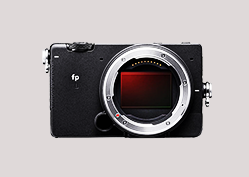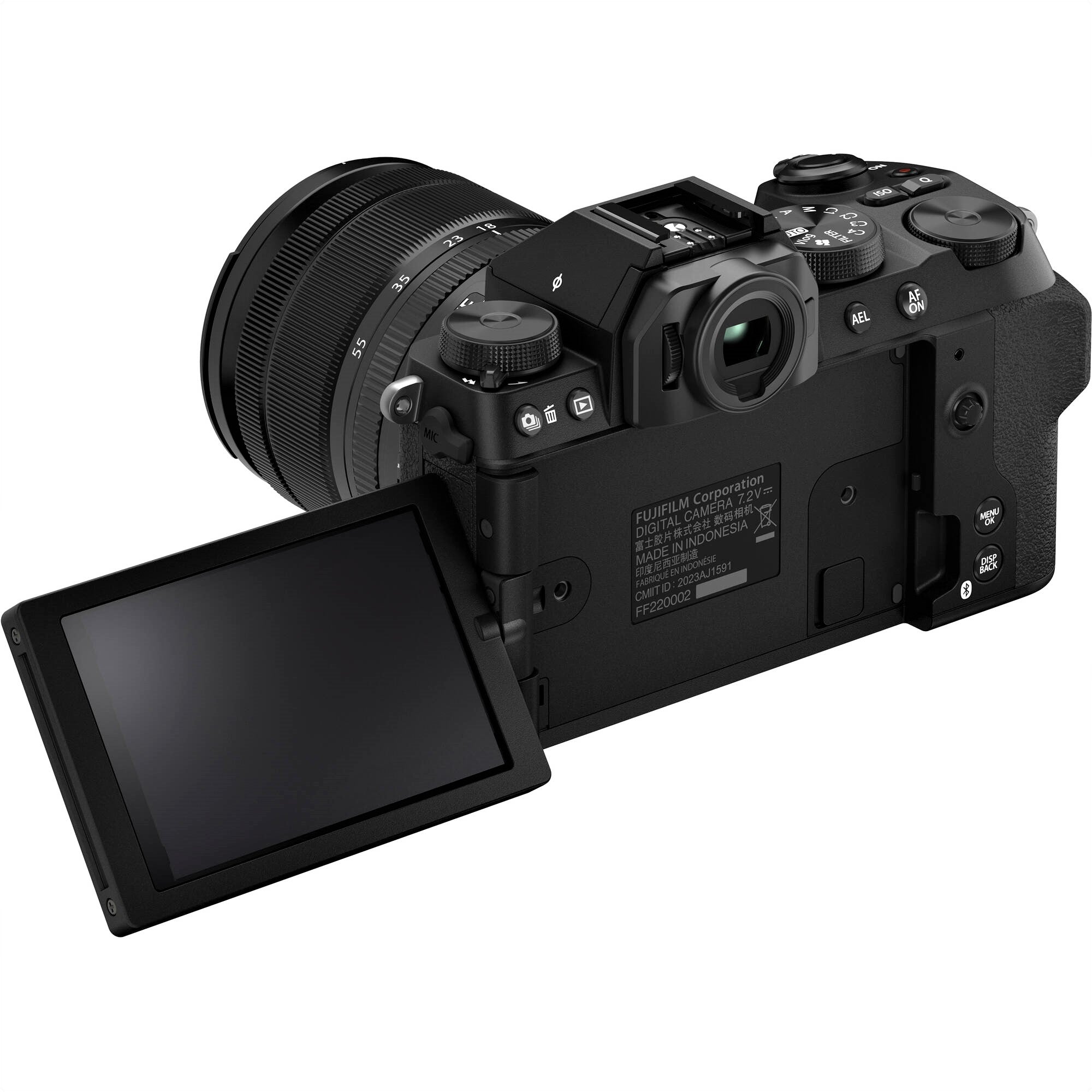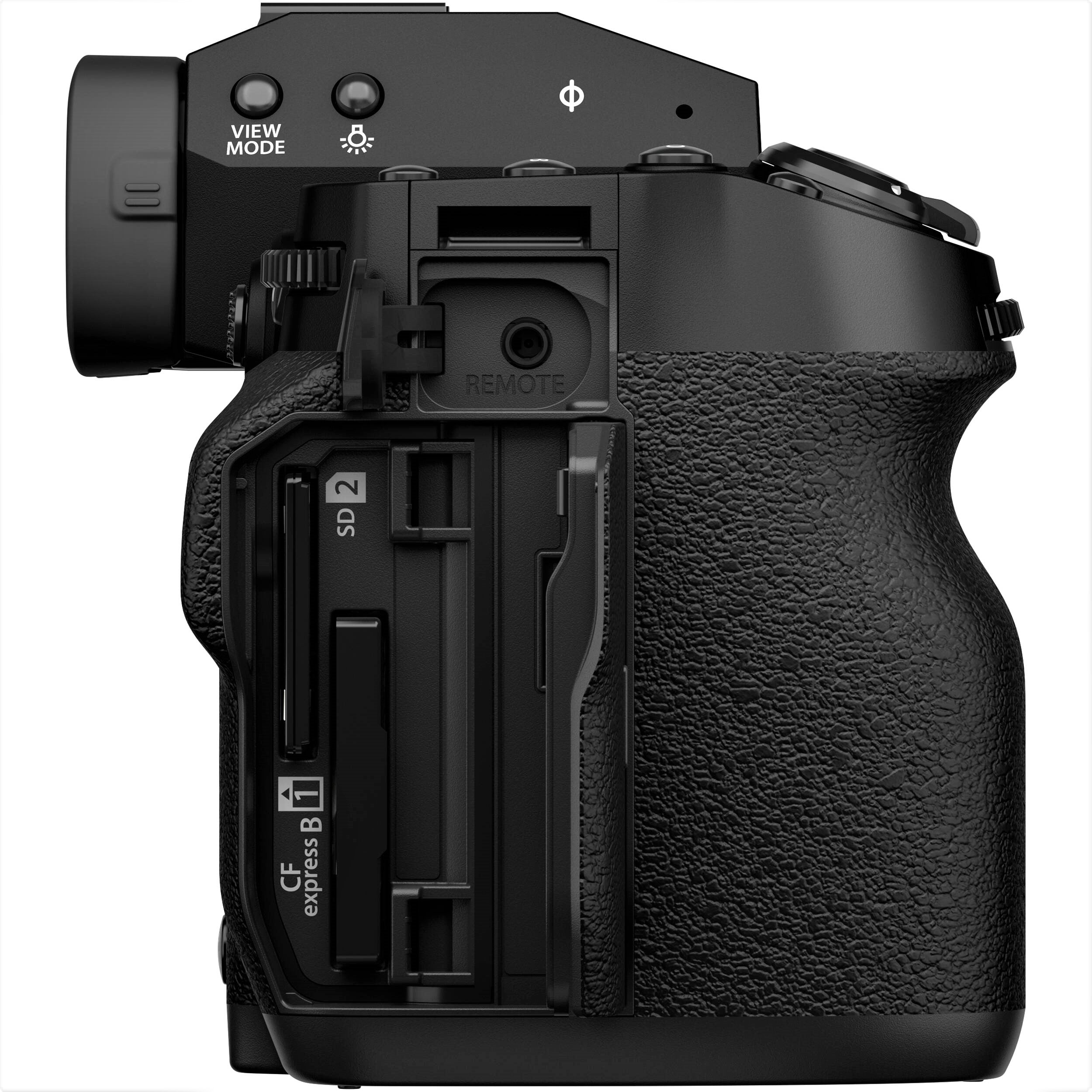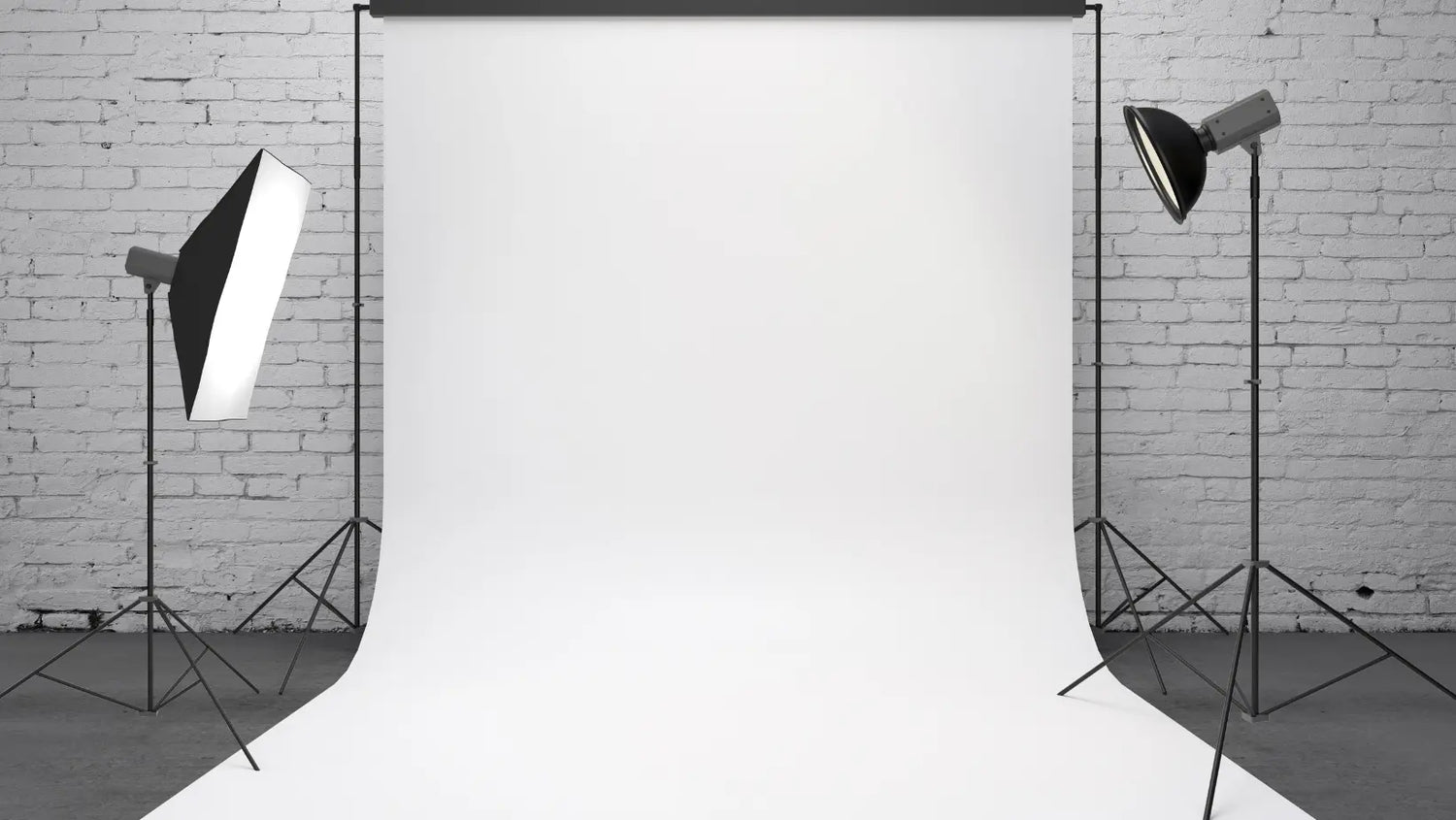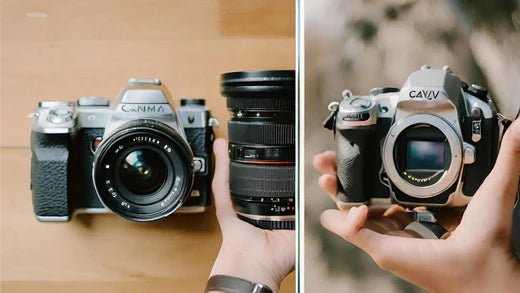The Role of Background in Photographic Composition
Photography isn't just about the subject; the background plays a vital role too. It adds context, depth, and narrative, acting as a silent storyteller that emphasizes your main focus and sets the emotional tone.
For example, a soft, blurred backdrop can sharpen the focus on your subject, while a lively, active one might infuse energy and movement into your shots.
Yet, choosing the right background is tricky. A cluttered or mismatched backdrop can overwhelm your subject and muddle the photo's message. The key is to find a balance where the background complements, not competes with, your main focus.
This guide talks into the critical role of backgrounds in photography. We'll cover how to select the right colors and textures, and how lighting and depth of field shape background perception.
We'll discuss various backgrounds and how they can add meaning or clarity, whether you're capturing a tranquil portrait or a bustling street scene.
By the end, you'll know how to select and create backgrounds that not only enhance your subjects but elevate your photography's overall impact, ensuring every frame element serves a purpose and tells your intended story.
What is background in photography?

In photography, the background does more than fill space—it's essential. It tells a story, adds depth, and sets the scene. Think about a calm forest or a busy city street. These backdrops do more than fill space; they enhance the story the photo tells.
In a studio, you control the lighting and backdrops. This control helps shape how people feel about the photo. The relationship between the subject and its background is crucial. Depth of field, which is how much of the photo is in sharp focus, is key here.
By focusing carefully, a photographer can make the subject stand out or blend in, creating a captivating or coherent image.
Choosing the right background means understanding how different elements like textures and colors work with the subject. A busy background can distract, but the right one can draw attention to the subject and set the mood. As photographers get better, they use backgrounds more effectively.
They're not just capturing shots; they're creating experiences that stick with the viewer. Each photo becomes a powerful example of how background shapes a story in photography.
Importance of the Background
Choosing the right background is key in photography. It adds depth and context, enhancing the composition. The background is more than just filler. It works with the subject to set the mood and tone of the image. In portraits, a soft blur highlights key features. In landscapes, detailed settings help tell a story.
The background should complement, not overshadow, the subject. It subtly directs the viewer’s gaze, adding layers to the narrative of the photo.
In photography, the background is more than just a setting; it's a vital component that shapes the image's narrative and emotional impact. Its significance can be highlighted by:
-
Contextualizing the Subject: A good background tells a story. For example, an old wall behind an elderly person may suggest a long life full of stories. A lively street scene adds life to a candid shot.
- Enhancing Subject Focus: Backgrounds help focus on the main subject. A blurred background in portraits highlights facial features by reducing distractions. In contrast, a detailed background in landscapes draws the eye from front to back, adding narrative.
- Setting the Tone: The background sets the mood. A calm, simple backdrop can feel serene, while a busy one might seem energetic. It's like a canvas, setting the stage for your story.
-
Influencing Depth and Perception: A well-used background can give depth to a flat image. Placing elements strategically within the background can make the subject seem more powerful or integrated into its setting.
-
Conveying Emotion and Atmosphere: Background elements like color and texture evoke feelings. Cool colors might feel calming, and warm colors exciting. Shadows, patterns, and lines add emotional depth to the image.
By understanding and leveraging the background, photographers can craft compositions that are both visually compelling and emotionally resonant.
Key points about the background in photography
The background can be in focus or out of focus, depending on the depth of field and the photographer's intent. Here are some key points about the background in photography:
- Separation from the Subject: A well-chosen background can help separate the subject from its surroundings, making the subject stand out more prominently in the image.
- Depth of Field: By adjusting the aperture (f-stop) on the camera, a photographer can control the depth of field, which in turn determines how much of the background is in focus. A shallow depth of field (achieved with a larger aperture, like f/1.8) will blur the background, while a deep depth of field (achieved with a smaller aperture, like f/16) will keep more of the background in focus.
- Distractions: A cluttered or busy background can distract from the main subject. Photographers often aim for backgrounds that are simple and unobtrusive, so they don't pull attention away from the subject.
- Complementary Colors and Tones: Using backgrounds with colors and tones that compliment the subject can enhance the overall mood and feel of the image.
- Storytelling: The background can also be used to tell a story or provide context about the subject. For instance, a portrait of a person with a cityscape in the background can convey that they are urban dwellers.
- Manipulation in Post-Processing: With modern photo editing software, photographers can modify or even replace the background of an image in post-processing to achieve a desired effect.
- Use of Props and Backdrops: In studio photography, photographers often use props and backdrops to create a controlled background that suits the theme of the shoot.
Understanding how to effectively use the background is a fundamental aspect of photographic composition. By paying attention to the background, photographers can enhance the impact of their images and better convey their intended message or emotion.
Types of backgrounds
- Natural Backgrounds: Think mountains, skies, and forests. These provide a calm, genuine feel, adding depth to any scene. They're perfect for projects that aim to connect with nature or express freedom. For photographers and filmmakers, these environments pose unique challenges, like capturing the perfect natural light or a specific seasonal mood. The realness of these settings deepens the emotional impact of your visuals.
-
Urban Backgrounds: City scenes, bustling streets, and towering buildings define urban backgrounds. They capture the lively energy and architectural charm of city life. Ideal for stories that resonate with urbanites or explore city dynamics, these backgrounds offer vibrant storytelling potential. They bring together cultural elements like street art and landmarks, enriching the visual narrative.
- Studio Backgrounds: Studio backgrounds are all about control. Used in fashion shoots and product photography, they allow for precise lighting and mood settings. Whether it’s a stark white backdrop to emphasize the subject or a colorful pattern to set a tone, these backdrops are key for consistent, professional results.
- Abstract Backgrounds: Abstract backgrounds simplify to magnify. They reduce distractions, making the subject the clear focus—useful in product photography or expressive portraits. From soft-focus hues to intricate patterns, these backgrounds direct attention and set a distinct style.
Choosing backgrounds and backdrops
Selecting the right background or backdrop is essential in photography, profoundly influencing the visual narrative and overall aesthetics of your image. Here are some expert considerations to guide you through this critical decision-making process:
- Purpose Alignment: Start by defining the purpose of your photograph. Whether it's a portrait, a product shot, or a sweeping landscape, the background should support your main goal. For instance, a muted, seamless backdrop works well for highlighting a product in a studio, while a vibrant street scene can enhance a portrait by adding contextual richness.
-
Contrast and Harmony: Finding balance is crucial. The background should complement the subject without overshadowing it. For high-contrast subjects, choose simpler, understated backdrops that focus attention on the main subject. On the other hand, a subject with subdued tones might benefit from a more dynamic background to add depth.
- Mood Setting: Backgrounds set the mood. Consider the emotion or atmosphere you want to evoke. Light-colored backdrops can create a sense of airiness and positivity, ideal for cheerful product photography or gentle portraits. Darker, textured backgrounds are good for a dramatic, introspective mood, suitable for deeper themes.
- Practical Considerations: In a studio, practicality is key. Think about the ease of setup and the versatility of your backdrops. Options like reversible backdrops, modular sets, or even digital screens can offer flexibility and efficiency, especially when working under tight deadlines or with varied photographic needs.
- Depth of Field Mastery: Choosing between a sharp or blurred background can dramatically change how your subject is perceived. A shallow depth of field (wide aperture) blurs the background, isolating the subject and directing attention to it, which is perfect for portraits or detailed product shots. A deep depth of field (small aperture) keeps both the foreground and background in focus, essential for landscape or architectural photography.
By considering these elements, you can significantly enhance the impact of your photography. Each choice should be intentional, aligning with the photograph’s intent, enhancing the subject, and enriching the story you aim to tell. This approach not only improves the visual appeal but also deepens the viewer's engagement, making your work not just seen but felt.
Choosing the Right Gear: The FUJIFILM GFX100 II

While understanding the details of background composition is important, the camera you choose plays an equally significant role in capturing the essence of your vision. We recommend the FUJIFILM GFX100 II.
Tagged as "More than Full Frame," the GFX100 II promises a level of detail and depth that can make backgrounds come alive. Whether you're aiming for a blurred bokeh effect or a sharp, detailed landscape, this camera's potential medium format sensor ensures that every element, from your subject to the farthest point in the background, is captured with precision.
Such clarity and depth can elevate the background's role in your composition, allowing for a richer storytelling experience. Imagine capturing the subtle textures of a brick wall behind a portrait subject or the intricate patterns of leaves in a forest landscape. The GFX100 II ensures that the background, often the unsung hero in a photograph, gets its moment in the spotlight.
For photographers who understand the symbiotic relationship between the subject and the background, investing in a camera like the FUJIFILM GFX100 II can be a game-changer.
Conclusion
The background, often overlooked, is a powerful tool in a photographer's arsenal. It's the silent storyteller, the unsung hero that can elevate a photograph from ordinary to extraordinary. As we've explored, the right background can make your subject shine, adding depth, context, and emotion to your shots.
So, the next time you're framing a shot, give a thought to the story your background is telling.
Interested in more photography tips and tricks? Bookmark our website “Nuzira”, share this guide with fellow photography enthusiasts, and stay tuned for more insightful articles!

